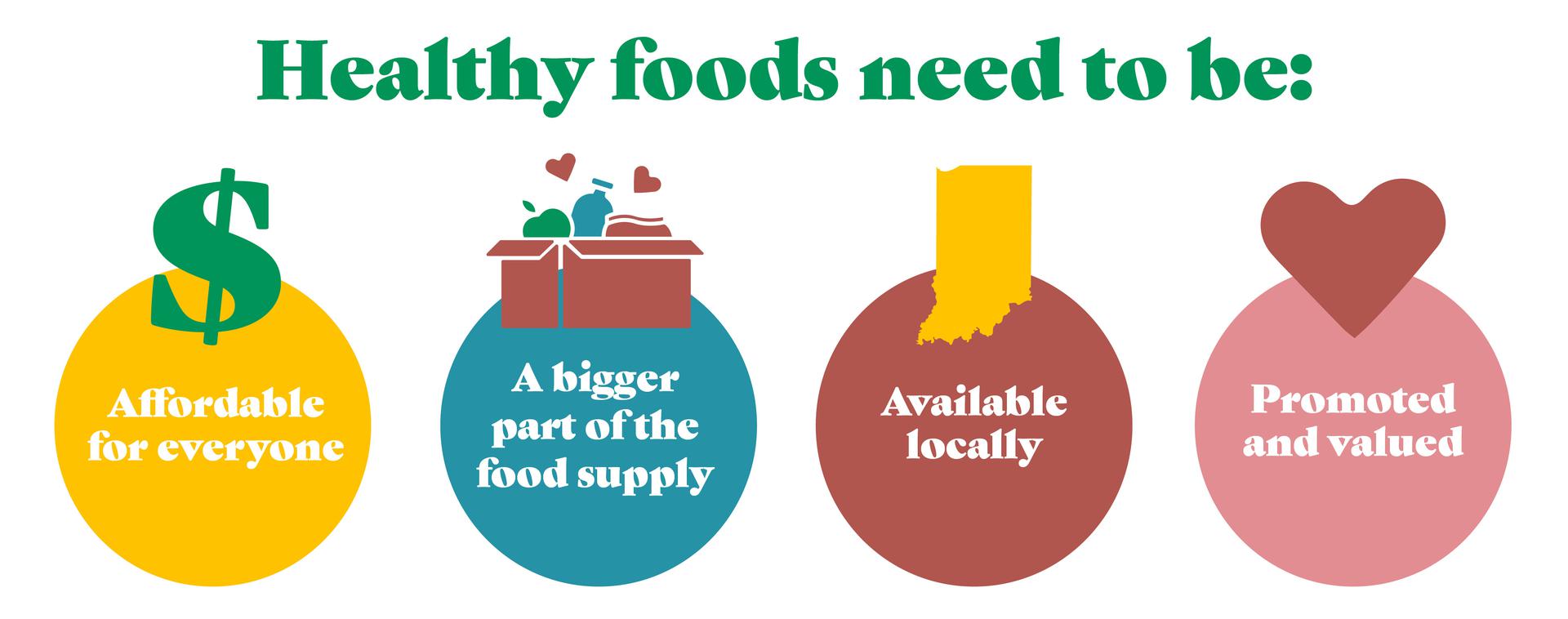Article
Good Food for Thought
They're out of milk, bread and a lot of other things. The kids are fighting, and Nia is about to lose it.
It's the end of the month and she doesn't have much left to spend on food. She can walk to the convenience store or try to take a bus with the kids to get to the grocery store. Convenience store packaged foods won't help her high blood pressure but hauling the grocery bags back on the bus and hanging on to the little ones won't be easy either.

Thousands and thousands of adult Hoosiers suffer from food insecurity as do 274,080 Hoosier children, according to a 2020 Feeding America report. Each day, people across Indiana must weigh affordability, access and good nutrition when making choices about food and feeding their family. The choices they make will impact their health.
Challenges such as food deserts and a lack of stores that carry affordable, healthy foods also greatly impact health. According to the USDA’s 2015 Food Access Research Atlas, more than 874,486 Hoosiers live in neighborhoods that are deemed low-income and low access. This means that they are one mile from a supermarket in an urban area or more than 10 miles away in a rural area.
Solutions to these barriers are critical to good health. Indiana has been creative in identifying solutions such as enabling Supplemental Nutrition Assistance Program recipients to use their EBT cards to purchase food online and have groceries delivered, coordinating with food banks and pantries to distribute food to people in need, and providing extra assistance to families with children through free and reduced lunch programs in schools.
Learn more about how food impacts health
Health is more than you realize.
